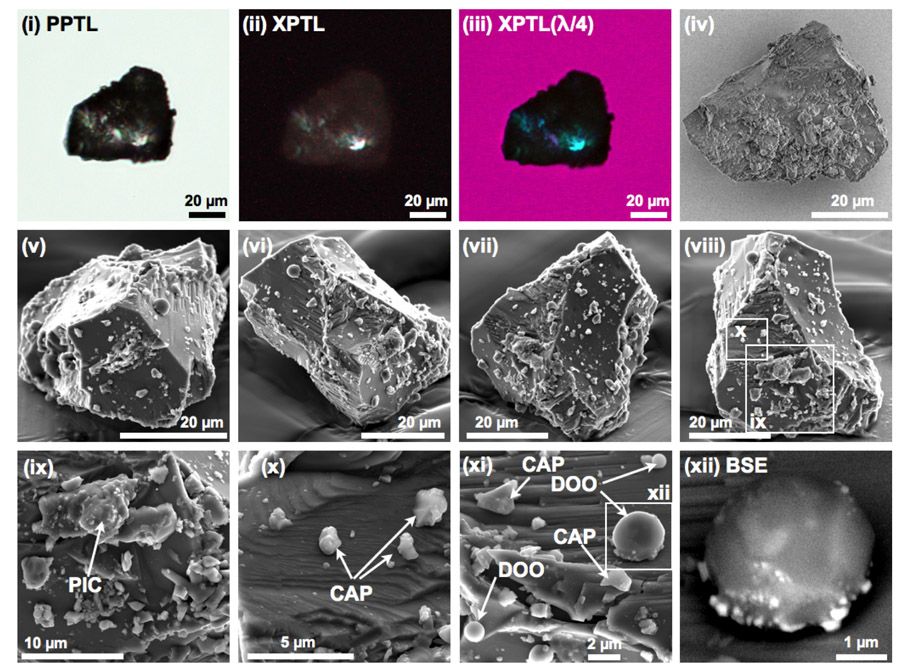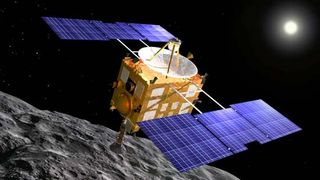1st Asteroid Samples Reveal Surprising Look at Space Rock Crashes

The first dust grains ever retrieved from the surface of an asteroid now confirm that these minor planets are constantly shaped by a continuous barrage of high-speed microscopic impacts, scientists find.
The Japanese asteroid probe Hayabusa succeeded in returning more than 1,500 grains of dustfrom the asteroid 25143 Itokawa when it parachuted into the Australian outback in June 2010. Already, the samples from this 1,800 foot-long (550 meter) rubble pile have helped solve the longstanding mystery of where most meteorites striking our planet come from.
To uncover still more details about asteroids, scientists analyzed the size, mineralogy, shape and geochemistry of five dust grains recovered by Hayabusa. The smallest of these was just 40 microns, or millionths of a meter, in diameter — less than half the width of a human hair — and were cut into pieces using focused beams of electrically charged ions for analysis under microscopes.
The surfaces of these five grains were dominated by fractures, suggesting they might have experienced shocks from impacts. The walls of these fissures contained not only craters just 100 to 200 nanometers (billionths of a meter) wide, but also a large number of particles stuck onto them, ones several microns wide or smaller. [Photos: Japan's Mission to Asteroid Itokawa]
"They work like sticky tape," study lead author Eizo Nakamura, a materials scientist at Okayama University in Japan, told SPACE.com.

The size range and chemical composition of the particles stuck on the sides of these fractures, along with the presence of nanometer-sized craters, suggest the pitted surfaces of these grains were formed by micrometeoroids just nanometers wide colliding into the asteroid. These impacts were high-energy, hitting at speeds of about 11,200 to 22,400 mph (18,000 to 36,000 kph).
Asteroids are often considered primitive objects left relatively unchanged since the formation of the solar system. These new findings reveal their surfaces have actually experienced much "space weathering" over time.
Sign up for the Live Science daily newsletter now
Get the world’s most fascinating discoveries delivered straight to your inbox.
"Asteroid surfaces are not quiet places, but see heavy bombardment," Nakamura said.
The fact that Itokawa and similar asteroids are airless bodies with minimal gravitational fields means that dust may regularly get kicked off them by impacts. This microscopic debris likely then goes on to constantly slam into other interplanetary objects in outer space, playing a major role in their shaping and evolution, Nakamura said.
Nakamura and his colleagues detailed their findings online Feb. 27 in the journal Proceedings of the National Academy of Sciences.
This story was provided by SPACE.com, a sister site to Live Science. Follow SPACE.com contributor Charles Q. Choi on Twitter @cqchoi. Visit SPACE.com for the latest in space science and exploration news on Twitter @Spacedotcom and on Facebook.













